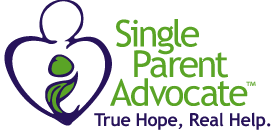A school supply list to get you started
Keep this checklist handy to make your back-to-school shopping as easy as A, B, C.
What’s the smart way to shop for school supplies? Eliminate the guesswork by getting a list from your child’s teacher ahead of time or waiting until school starts to find out what’s actually required. The teacher may recommend specific brands, sizes, or quantities, but even if the list isn’t available, you can still take advantage of back-to-school sales (many states offer “tax-free days” during this season) by sticking to the basics recommended below. And remember, you can’t go wrong with tools that help kids get — and stay — organized.
The basics
When it comes to writing essentials, teachers say, don’t waste your money on feather pencils, light-up pencil sharpeners, or pretty erasers that don’t work. And for organizational helpers, keep in mind that expensive folders with multiple pockets and zippers are often too bulky to fit in desks. Better to stick with more streamlined (and cheaper) models.
Glue sticks (at least three for the year)
Scissors (blunt ended for younger kids, pointed for older ones)
Ballpoint pens
No. 2 pencils (Stick with this classic to avoid classroom competition over whose writing utensil is the coolest — or most impractical.)
Colored pencils
A pencil sharpener (hand-held with a top to collect shavings)
A large pink eraser (The old-fashioned ones do the best erasing.)
Water-based markers
A four-ounce bottle of white glue
Highlighters (These are probably unnecessary for kids in kindergarten through second grade.)
Spiral-bound or composition notebooks
A three-ring binder
Loose-leaf notebook paper (Teachers can be picky about paper. Schools usually supply specially ruled handwriting paper to help younger children with letter formation. Older children use wide-ruled paper, and some middle school students will need the college-ruled variety.)
Pocket folders (If you get a folder with two pockets, label one “keep at home” and the other “bring to school” to help your child organize his papers.)
Printer paper and ink cartridges (for your home computer)
A ruler with English and metric measurements
Scotch tape
A stapler
A sturdy, supportive backpack (Some schools do not permit rolling backpacks because of space considerations, so check with your school before purchasing one.)
Extras for elementary school students
A box of crayons (Get a 16-pack for younger kids, more for older ones.)
Watercolor paints
Drawing paper
Construction paper
A box for storing items (Teachers recommend one that’s eight inches long by five inches wide by two inches deep to hold pencils, crayons, erasers, and scissors.)
Extras for middle school students
A calendar for scheduling assignments
Two combination locks (If the school lockers do not have built-in locks, your child might need one for the hallway and one for the gym.)
Binder dividers (The kinds with pockets are good for loose papers.)
Several three-ring binders (Some teachers require that a binder be used exclusively for their class.)
Folders that fit in binders
A small notebook to record assignments
A pencil case that fits in binders
Red-ink pens (Some teachers have students do peer editing.)
Index cards, ruled and unruled (These are great for making flash cards.)
A calculator (Check with the math teacher first before investing in an expensive calculator. Graphing calculators, for example, are required in some middle school math classes. Teachers advise parents not to buy a calculator with more functions than your students will use.)





